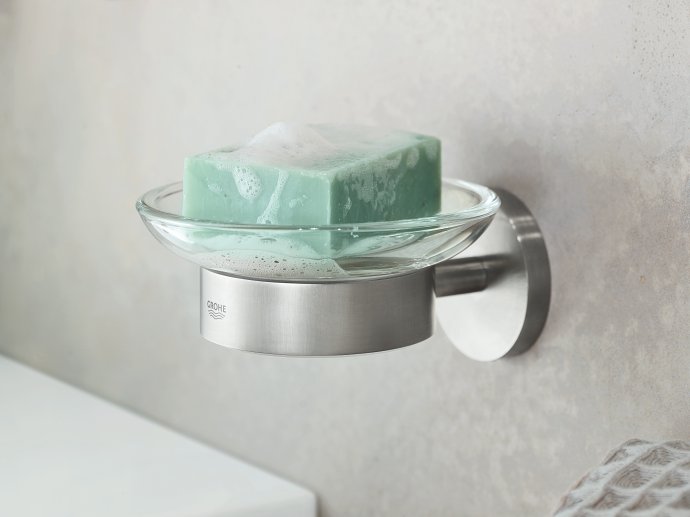
WASHING YOUR HANDS:
HOW TO PREVENT DISEASES
According to the Robert Koch Institute (RKI), washing your hands properly protects the body from bacteria, viruses, and fungi.¹ Whether we're shopping, on public transport or even cooking, we’re constantly using our hands which makes coming into contact with germs unavoidable. However, washing our hands regularly helps to prevent pathogens from being transmitted from person to person. But how do you wash your hands properly? And how do you teach your children to do it?

WHY WASHING YOUR HANDS PROTECTS YOUR HEALTH
It doesn't matter whether you’re pressing the bell on the bus, petting the neighbour's dog, preparing food, or going to the toilet: there are germs everywhere that can transfer to your hands. Epidemiologists at the RKI have found this out from carrying out numerous studies.² These germs become problematic if you inadvertently touch your face, rub your eyes, or put a piece of food in your mouth. Pathogens can enter the body quickly via mucous membranes and damage your health. This can result in diarrhoea, a cold, or severe flu.
According to the RKI, not everyone’s immune system can successfully fend off these pathogens. Doctors therefore have the following warning: These germs can be dangerous for small children, the elderly, and people with pre-existing health conditions. Every day we encounter numerous opportunities where we encounter them. Consequently, germs linger on everyday objects and transmit to people when touched. You can break this vicious circle by washing your hands regularly as this considerably reduces the number of germs. According to the BZgA (The Federal Centre for Health Education), several studies have already proven its effectiveness.
WASHING HANDS - STEP BY STEP
You will only stop germs if you wash your hands properly instead of letting a few drops of water trickle onto them. Washing your hands thoroughly sounds more complicated than it is. Once you've done it a few times, it'll happen automatically. The BZgA recommends doing the following:
Step 1: Wet your hands thoroughly under running water. Choose a water temperature that is comfortable for you. According to hygiene experts, the temperature does not affect how clean your hands become.

Step 2: You can only wash your hands thoroughly if you use soap - a point that hygiene experts have emphasised repeatedly. When using liquid soap, a hazelnut-sized amount is generally considered sufficient. It is important that the soap is distributed evenly over your hands. Rub the soap into both palms and the back of your hands. Don't forget between your fingers as well as your fingertips and thumbs. If your fingernails are visibly dirty, it is advisable to use a clean hand brush to get all the dirt out.
Step 3: Gently rub and massage the soap until it lathers up. Research has found that time plays a major role and it takes at least 20 to 30 seconds to wash your hands to make sure you’ve not forgotten any parts. This is also a method healthcare professionals adhere to when washing their hands. However, if your hands are visibly dirty from activities like gardening or cleaning, you will need to wash them for a longer time.

Step 4: Finally, remove all soap residue by rinsing your hands under running water. When turning off the tap after washing your hands, try not to touch it with your hands. This is because the germs you transferred to the tap when you turned it on could still be there. It is generally recommended to do it the way doctors and nurses do it - they prefer to use a towel or their elbow to turn the tap off.
Step 5: Dry your hands carefully. It has been scientifically proven that drying your hands removes any germs that have managed to stick around. In addition, bacterial and fungal spores love moist environments. For this reason, it is important to have your own designated towel in your bathroom and to dab the spaces between your fingers until dry. Regarding public toilets, hygiene inspectors found out that it is better to use a disposable towel or tissue rather than a towel that has already been used by several people.
Tip: Prefer to watch a hand washing demonstration? You can find a video on the NHS website.

Unique ease of use
- Non-contact fittings with reliable sensors.
- Water jet activated by hand movement.
- Water-saving as only the required amount of water is released.

Innovative Technology
- Automatic flushing prevents stagnant water in pipes.
- Lack of dead spaces in the fitting to prevent stagnant water.
- Thermal disinfection against bacteria, legionella bacteria and other germs.
External sources:
¹ Robert Koch Institut: Epidemiologisches Bulletin, 30. April 2012 / Nr. 17, S. 143f.
² Robert Koch Institut: Epidemiologisches Bulletin, 29. April 2013 / Nr. 18/19, S. 139.
³ Bundeszentrale für gesundheitliche Auzfklärung (BZgA): Broschüre "10 Hygienetipps", S. 5.
⁴ Robert Koch Institut: Epidemiologisches Bulletin, 29. April 2013 / Nr. 18/19, S. 166.